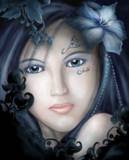Chronologically Indonesian literature divided into several periods:
Pujangga Lama: the "Literates of Olden Times" (traditional literature)
Sastra Melayu Lama: "Older Malay Literature"
Angkatan Balai Pustaka: the "Generation of the [Colonial] Office for Popular Literature" (from 1908)
Pujangga Baru: the "New Literates" (from 1933)
Angkatan '45: the "Generation of 1945"
Angkatan 50-an: the "Generation of the 1950s"
Angkatan 66-70-an: the "Generation of 1966 into the 1970s"
Dasawarsa 80-an: the "Decade of the 1980s"
Angkatan Reformasi: the post-Suharto "Reformation Period".
There is considerable overlapping between these periods, and the usual designation according to "generations" (angkatan) should not allow us to lose sight of the fact that these are movements rather than chronological periods. For instance, older Malay literature was being written until well into the twentieth century. Likewise, the Pujangga Baru Generation was active even after the Generation of 1950 had entered the literary scene.
Traditional literature: Pujangga Lama
Early Indonesian literature originates in Malay literature, and the influence of these roots was felt until well into the twentieth century. The literature produced by the Pujangga lama (literally "the old poets") was mainly written before the 20th century, but after the coming of Islam. Before that time, however, there must have existed a lively oral tradition.
Genres
In written poetry and prose, a number of traditional forms dominate, mainly:
syair (traditional narrative poetry)
pantun (quatrains made up of two seemingly disconnected couplets)
gurindam (brief aphorisms)
hikayat (stories, fairy-tales, animal fables, chronicles)
babad (histories or chronicles).
1870—1942: Sastra Melayu Lama
The literature of this period was produced from the year 1870 until 1942. The works from this period were predominantly popular among the people in Sumatra (i.e. the regions of Langkat, Tapanuli, Padang, etc.), the Chinese and the Indo-Europeans. The first works were dominated by syair, hikayat and translations of western novels.
At the beginning of the twentieth century, however, changes became visible. National consciousness emerged among educated Indonesians especially. At the same time, the Dutch colonisers temporarily veered to a point of view which allowed for the education and unification of the Indonesian peoples to self-reliance and maturity, as it was perceived. Indonesian independence, however, was not contemplated by the Dutch. A third factor was the emergence of newspapers, which at the beginning of the century began to appear in Chinese and subsequently in Malay.
At the same time, school libraries were founded and were supplied by the new publisher. Works in Dutch as well as translations of world literature were brought out, but a burgeoning indigenous literature was also stimulated. From 1920 to 1950 Balai Pustaka published many works in high Malay (as opposed to everyday "street Malay"), but also in Javanese and Sundanese, and occasionally also in Balinese, Batak or Madurese.
National consciousness among young Indonesian intellectuals was well-developed.
These intellectuals had formed various groups: there existed, then, a certain degree of organization.
The need for a national language was felt, as was the need for literary expression in that language.
While a platform for such expression existed in Balai Pustaka, this platform was considered unsatisfactory in that it was government-controlled, and therefore at odds with the urge for nationalist development. The intervention of Dutch language officials was felt to be censorship, and the editorial policy was regarded as an unwarranted harnessing of the emerging language. (Thus, certain words were invariably replaced by more "respectable" synonyms, which seemed to curtail language development as well as freedom of expression.
div class="fullpost" align="justify">Angkatan 50 was characterized by the Kisah magazine, established by H.B. Jassin. This generation of Indonesian literature was dominated by collections of short stories and poetry. This generation was also characterized by the emergence of socialist and communist thought among its authors. Most of these authors were members of an organization called Lembaga Kebudajaan Rakjat (Lekra). The end of this literary generation came when political upheaval connected with the 30 September Movement erupted.





0 comments:
Post a Comment